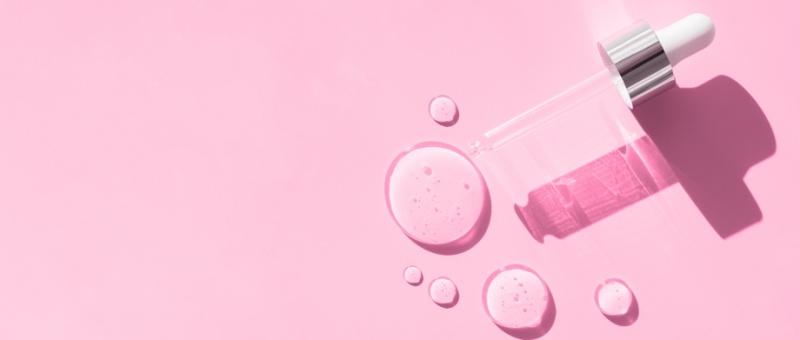
Rétinol : avantages pour la peau, effets secondaires et plus encore
Peer reviewed by Dr Colin Tidy, MRCGPLast updated by Lynn StephenLast updated 22 Oct 2025
Répond aux besoins du patient lignes directrices éditoriales
- TéléchargerTélécharger
- Partager
- Langue
- Discussion
Whatever your age, if you've ever thought about skincare, you've probably heard of retinol. But if you're unsure exactly what it is - or why you might need to know - you're not alone. To confuse matters, the term 'retinol' is used in similar contexts as 'retinoid' and 'retinoic acid' among others.
Here's an overview of retinol, its benefits for the skin and things to think about before adding it to your skincare routine.
Dans cet article :
Poursuivre la lecture ci-dessous
Qu'est-ce que le rétinol ?
En termes simples, le rétinol est une forme de vitamine A. Il appartient à un groupe de substances chimiques appelées rétinoïdes, qui sont toutes apparentées à la vitamine A et ont des effets similaires sur l'organisme.
We need vitamin A - just like we do other nutrients - for several reasons. It contributes to good eyesight, a strong immune system, and healthy skin.
Because our bodies don't make vitamin A, we need to get it from somewhere. In the diet, it's found in foods such as liver, milk, and eggs, but it's also popular as an oral supplement as well a component of topical creams and serums.
Le rétinol est-il bon pour la peau ?
Dr Catherine Borysiewicz, consultant dermatologist at the King Edward VII Hospital, explains that vitamin A and its by-products have been hailed as hero ingredients in skincare for many years.
She says: "Retinol was first used in skincare products in the 1980s, but its use in helping as an anti-ageing ingredient was first reported in medical literature in 1995.
"De nos jours, le rétinol et les rétinoïdes sont souvent recommandés par les dermatologues pour traiter un certain nombre d'affections cutanées courantes, notamment l'acné, la production excessive de sébum et le vieillissement de la peau."
Comme il s'agit d'une forme plus faible de vitamine A, le rétinol est disponible dans des crèmes et des sérums en vente libre destinés à traiter les taches brunes et les signes de vieillissement, mais il est peu probable qu'il soit efficace pour traiter les cicatrices d'acné.
Borysiewicz adds that retinoid products used in the management of severe nodulocystic acne have a deeper penetration than over-the-counter prescription retinols.
Poursuivre la lecture ci-dessous
Que fait le rétinol ?
Retinol has several benefits for different skin types. It has antioxidant properties, meaning it helps to neutralise molecules called free radicals, which are produced when the skin is exposed to harmful environmental factors, such as pollution and ultraviolet radiation from the sun.
Les radicaux libres endommagent la peau en dégradant le collagène, une protéine qui confère à la peau son élasticité et son aspect rebondi. Lorsque le collagène est endommagé, il se manifeste par des ridules, des rides et une peau lâche et affaissée.
Borysiewicz explains: "Applying a retinol-containing product to the skin prompts thickening of the outermost layer of your skin (epidermal layer), and stimulates collagen production."
As a result, the skin has a firmer structure, and lines and wrinkles appear reduced.
Le rétinol augmente également le renouvellement des cellules de la peau, en éliminant les vieilles cellules mortes et en les remplaçant par de nouvelles cellules saines.
Comment utiliser le rétinol
As an added 'active' ingredient in skincare products such as creams and serums, retinol is available in different strengths. The higher the concentration, the more potent its effects.
It can be tempting to go all out and start off with a high-strength product in hope of turning back the clock. But it can cause irritation, redness, and dryness, so if you're incorporating retinol into your skincare regime, it's best to start low - the lowest-available concentration is 0.3% retinol - and build up your skin's tolerance.
Borysiewicz says: "A personal tip is to gradually increase the time the retinol is on your skin to limit irritation, which I call 'short contact' treatment."
She recommends for the first two weeks applying the retinol to cleansed skin and leaving it for an hour or two, before rinsing with water and using a moisturiser. After two weeks of this approach, the skin gradually gets used to the retinol. This reduces the chance of irritation.
Another way of allowing your skin to adjust is to apply a retinol cream or serum a few times a week, then increase to every other day and build up to everyday use. If severe irritation or dryness occurs, Borysiewicz adds, it's important to stop using the product immediately.
Quand utiliser le sérum au rétinol
Retinol can initially make your skin more sensitive to the sun's harmful UV radiation, and in turn, sunlight renders retinol inactive. For those reasons, it should be used at night - with broad-spectrum, high SPF sunscreen an essential part of your skincare routine every morning.
Poursuivre la lecture ci-dessous
Le rétinol est-il sûr ?
Après avoir fait l'objet d'un battage médiatique important, le rétinol est considéré par beaucoup comme la solution miracle en matière de soins de la peau. Mais est-ce trop beau pour être vrai et, surtout, est-il sûr pour une utilisation à long terme ?
Borysiewicz says: "Like most medical and beauty treatments, retinol isn't without side effects and as the concentration and dose of retinol increases, so does the likelihood of side effects, including retinoid dermatitis."
She explains: "This typically presents with redness and multiple small bumps in the skin, creating a rough and uneven texture - similar in texture and appearance to sandpaper.
"Sensitive sites such as around the mouth and eyes can be more susceptible to these reactions. The rash can be sore, dry, and peeling."
As well as the symptoms associated with retinoid dermatitis, retinol can cause general redness, inflammation, and itching. But more severe reactions - such as retinoid purge, where spots are brought to the skin's surface and worsen in the initial stages of acne treatment - are usually only seen with prescription-strength retinoids.
Overall, however, retinol has been demonstrated to be safe as well as effective in studies.
Puis-je utiliser le rétinol pendant la grossesse ?
Les femmes enceintes et celles qui allaitent ne doivent pas utiliser de rétinol et si votre peau est particulièrement sensible, il est préférable de consulter d'abord un dermatologue.
Peut-on utiliser d'autres ingrédients de soins de la peau avec le rétinol ?
You can mitigate the likelihood of unwanted symptoms and boost retinol's beneficial effects by choosing other skincare products that complement rather than clash with retinol.
Borysiewicz advises that you look at your skincare products - your cleansers and moisturisers - and make sure they are gentle and hydrating.
Peut-on utiliser la vitamine C avec le rétinol ?
Si vous utilisez également de la vitamine C topique dans votre routine de soins de la peau, il est préférable de ne pas la mélanger avec un produit à base de rétinol, car ils ont tendance à avoir des niveaux de pH différents. Les appliquer en même temps les rend donc moins efficaces. La solution consiste à utiliser la vitamine C le matin et le rétinol le soir.
Peut-on utiliser l'acide hyaluronique avec le rétinol ?
Le rétinol peut être utilisé en toute sécurité et efficacement avec d'autres ingrédients actifs de soins de la peau, notamment l'acide hyaluronique et le niacinamide, mais d'autres combinaisons requièrent une certaine prudence.
Peut-on utiliser le rétinol avec les AHA ?
Borysiewicz advises that if you are starting a retinol, it might not mix well with other active ingredients such as alpha hydroxy acid (AHA) and beta hydroxy acid (BHA). AHAs and BHAs are exfoliants, so there's a chance they could increase retinol-induced irritation on sensitive skins.
The take-home message is that retinol is a popular addition to any anti-ageing protocol, and it can be incorporated into most skincare regimes without issues. If you are in any doubt or have specific concerns that you're unsure how to treat, ask a dermatologist for advice.
Patient picks for Skincare

Santé de la peau, des ongles et des cheveux
Quel est l'effet du sérum de vitamine C ?
Un sérum à la vitamine C de bonne qualité peut être un excellent complément à votre routine de soins de la peau. Comme il en existe de nombreux sur le marché, voici comment choisir celui qui contient les ingrédients les plus efficaces et les plus scientifiquement prouvés.
par Victoria Raw

Santé de la peau, des ongles et des cheveux
Acide hyaluronique : avantages pour les soins de la peau, effets secondaires et autres
Si vous souhaitez ajouter une bonne dose d'hydratation à votre routine de soins de la peau, ne cherchez pas plus loin que l'acide hyaluronique. Contrairement à d'autres acides de soin, cette substance n'exfolie pas mais absorbe l'humidité, protégeant ainsi votre peau tout en lui donnant un aspect plus jeune.
par Lynn Stephen
Poursuivre la lecture ci-dessous
Historique de l'article
Les informations contenues dans cette page ont été évaluées par des cliniciens qualifiés.
Date de la prochaine révision : 22 octobre 2028
22 Oct 2025 | Latest version
28 Jun 2022 | Originally published
Auteur: :
Allie Anderson

Demandez, partagez, connectez-vous.
Parcourez les discussions, posez des questions et partagez vos expériences sur des centaines de sujets liés à la santé.

Vous ne vous sentez pas bien ?
Évaluez gratuitement vos symptômes en ligne